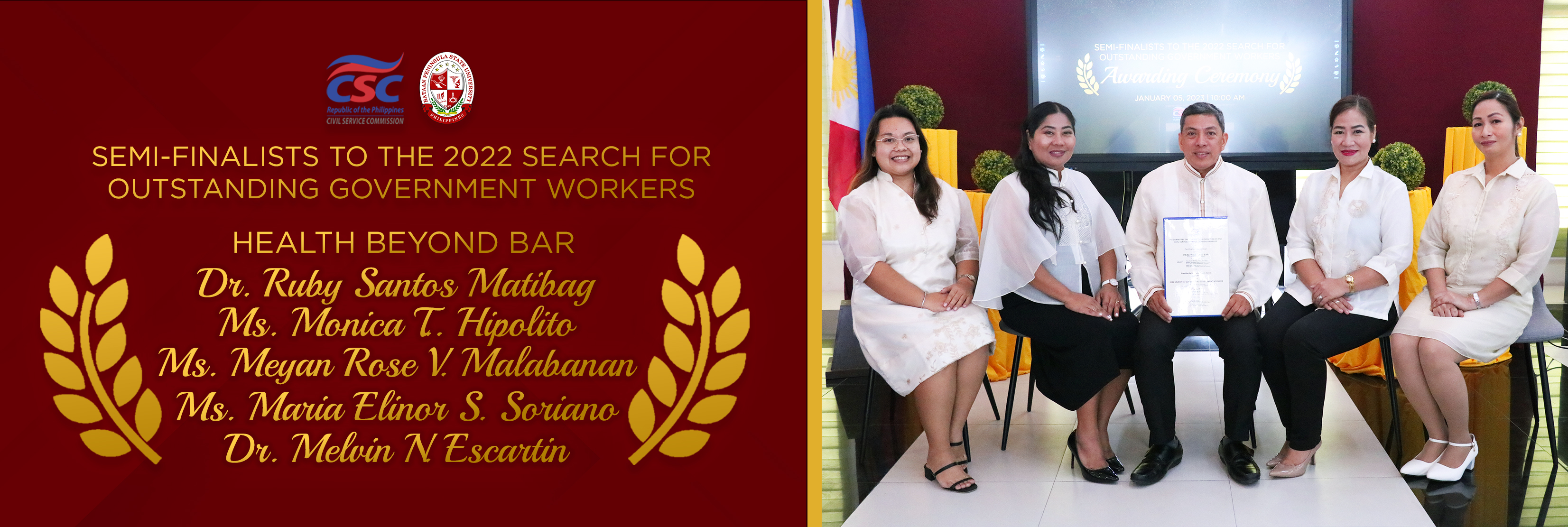Introduction
Hits: 97588Bataan Peninsula State University
The Bataan Peninsula State University was established by virtue of Republic Act 9403, signed into law on 22nd of March 2007. It is a conglomeration of fine leading higher education institutions in Bataan seeking to contribute to the national and regional development through providing excellent quality of services in instruction, research, production and extension.
Guided by one Vision of becoming a leading university in the Philippines recognized for its proactive contribution to Sustainable Development through equitable and inclusive programs and services by 2030.
Before the conversion, BPSU used to have three campuses; two are located in the City of Balanga while the third is situated in Orani. The passage of RA 9403 resulted to the expansion of BPSU's campuses as the said Act duly integrated the Bataan State College in Dinalupihan and its satellite campus in Abucay (formerly Bataan National Agricultural School). The five campuses of the university have very humble beginnings and yet they all emerged with glorious histories to be proud of. More empowerment is expected to be bestowed to each campus as their strengths shall be utilized for the success of the 111 programs and other services of the university. On June 2008, the University made education more accessible to the residents of the towns of Bagac and Morong by establishing an extension in the Municipality of Bagac. The extension offers some of the most in demand courses in the country like BS Entrepreneurship, BS Hotel and Restaurant Management, first two years of Nursing, and General Engineering courses.
Contributing to national development has always been the topmost priority of the university; therefore BPSU relentlessly keeps itself updated on the recent trends to be responsive to the present and future demands of the community. At present university has three programs granted with Level 1 Accreditation from AACCUP. Fifty-six (56) programs are scheduled for accreditation from 2008 to 2012. Moreover, the university continues to equip itself with faculty and employees who have remarkable skills and knowledge in order to uphold academic excellence and maintain its capacity of producing quality graduates. At present, 6 percent of its faculty have Doctorate degrees and 31 percent have master's degrees. The rest are still working on their post-baccalaureate studies.
It is not surprising that the enrollment continues to increase over the years as the university has proven its capability to match and even to surpass the performance of other reputable universities in the country in various competitions and also in the licensure exams. Other than this, low tuition fee rates, and pollution-free and safe environment further encourage the Bataeños and those from other nearby provinces to patronize BPSU.
For BPSU, a life without challenges to conquer would be futile as the university always stretches the limit to adapt to the changes and to turn trials into opportunities. Even cuts in the budget will not impede BPSU from attaining its goals. Aside from relying on its several IGPs to augment the budget and sustain its programs, the university continues to strengthen and to establish partnerships with local and international agencies that are more than willing to work side by side BPSU as it continues its journey towards a more dignified future.
University Seal
Oval shape – The entire seal is contained within an oval shape signifying dialogue between differences. The BPSU welcomes and thrives in diversity and healthy exchange of ideas. All sectors are encouraged to express their ideologies and sentiments: thus, further catalyzing the vision, mission and goals of the university. Such allows the BPSU academic community to move together toward one common direction.
Country of Origin – The word “Philippines”, written on a down ribbon placed at the lower part of the seal, speaks of the university’s country of origin. This connotes that BPSU functions as the government’s educational arm, helping the latter to realize its national development goals.
Laurel and Ribbons – Just above the aforementioned down ribbon, two stalks of laurel leaves symbolize the communities served by the university. Two yellow ribbons, where the words Qualitas (quality) and Excellentia (excellence) are written, appear below the laurel. The yellow ribbons here represent service and honor. Such is a reiteration of the university’s battle cry to set the trend for quality and excellence in its pursuit to provide quality and relevant education.
Stars- The five stars above the shield represent the five (5) original campuses merged to form BPSU. In the same manner, as stars have forever guided man in his journey, the five campuses shall collectively point and guide the university to greater heights of achievement and glory.
Shield – The biggest image inside the oval, the Shield pays homage to gallantry of the Bataeños and represents the historical and cultural significance of Bataan. Serving as the University Crest, the Shield is divided into quarters where BPSU’s mandates and thrusts are illustrated by various images.
Plow and Rice Stalks – These represent the agricultural programs of the University
Caduceus and Microscope – These refer to BPSU’s science and health-related programs.
Abacus, Torch and an Open Book – These stand for business, education, social and behavioral science.
Compass and Gear – These correspond to the engineering and technology programs of the university.
Founding Year – Located at the bottom part of the shield, the year 1953 is the year the Main Campus of the University was established. As the community measures an institution’s integrity and credibility by the number of years it has endured, 1953 serves as a powerful testimony of BPSU’s strong foundation as an education institution.








































 Bataan Peninsula State University
Bataan Peninsula State University